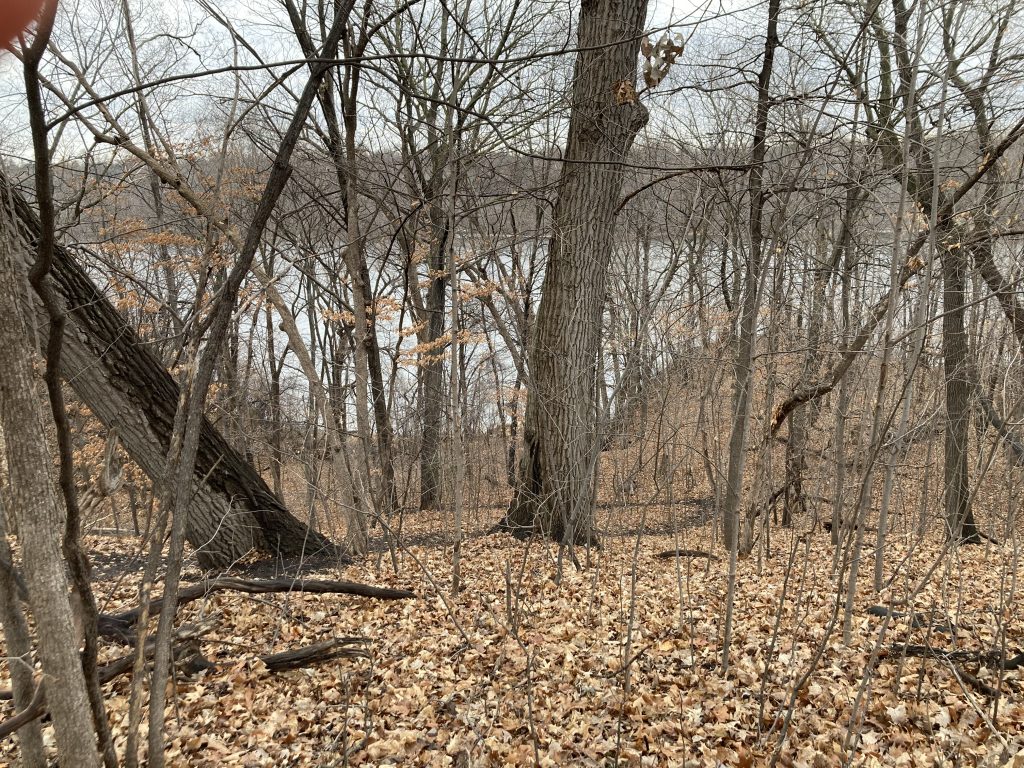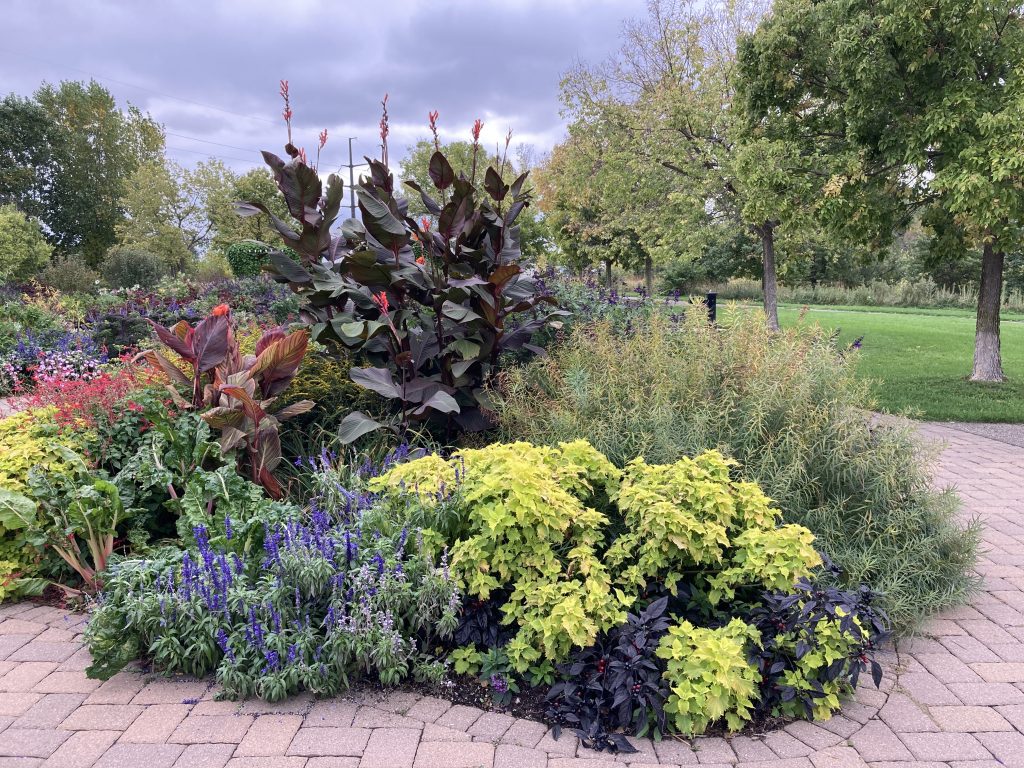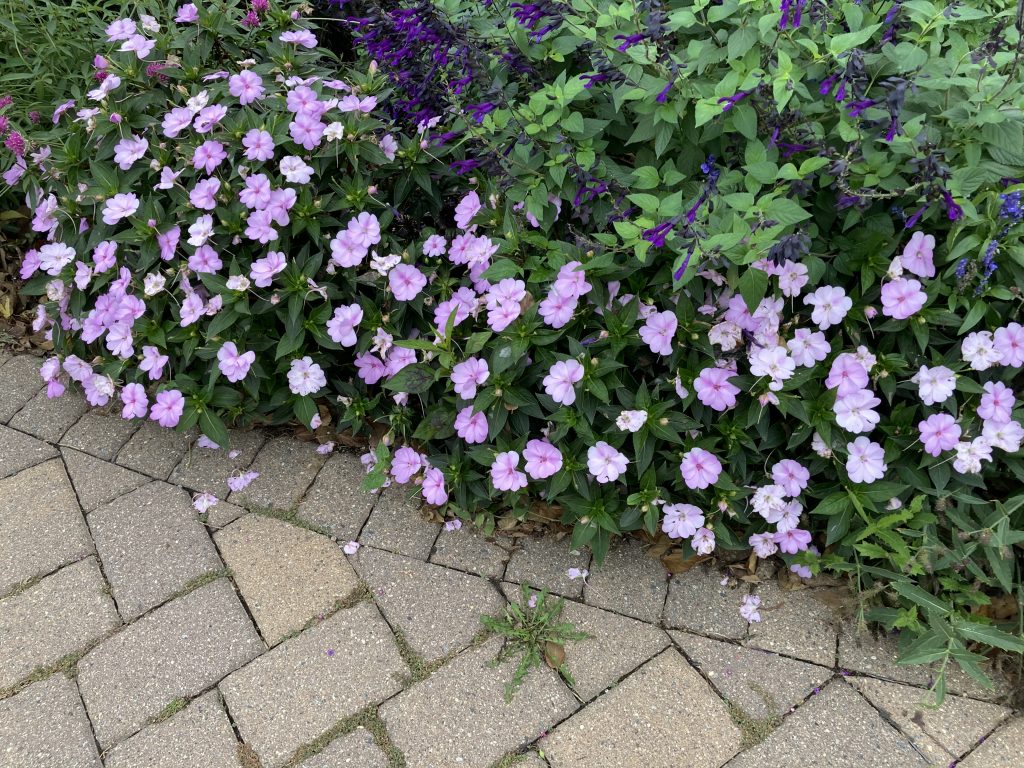20 minutes
3? inches
28 degrees
3 or 4 inches for round 1 of winter. We might get more snow in last night’s snowfall, combined with expected snow on Sun/Mon/Tues, than in all of Jan and Feb. Of course, that’s not saying much because our total prior to today was 7.3 inches. I wonder if what we got today will be melted by Monday? Future Sara, let us know!
six hours later: The snow has already melted off of the deck, the sidewalks, the road. Will the snow on the grass be gone before Sunday? Still not sure.
the secret life of plants
sources:
- Stevie Wonder’s album: Journey Through The Secret Life of Plants
- documentary, The Secret Life of Plants
- The 1970s plant craze / Teresa Castro
- Teaching a Plant the Alphabet
Yesterday afternoon, driving back from picking FWA up for spring break, we were talking about trees and how they communicate and their underground networks and how much sentience they have, and I remembered, and tried (unsuccessfully) to explain, the 1970s talking-to-plants craze. I mentioned how Stevie Wonder did an album about it. Scott didn’t remember the album. This morning I looked it up and . . . jackpot! Stevie Wonder’s album: Journey Through The Secret Life of Plants. I’m listening to it right now — ah, 1979! It is the soundtrack for a documentary, The Secret Life of Plants, which may or may not be a reliable source of “accurate” information about plant science (botany?) discoveries in the 1970s — wikipedia doesn’t seem to think so. I dug a little deeper and found an article about the plant craze of the 1970s — The 1970s plant craze / Teresa Castro
In the early 1970s, a general plant craze caught on in visual and popular culture alike. Against the background of New Age spirituality and the flourishing of ecological thinking, the 1970s plant mania came as an eccentric blow to the belief that sentience and intelligence are a human prerogative. It also relied massively on the cybernetic paradigm: envisaged as self-regulating biological systems, plants were recognized as communication systems in themselves. In this essay, I sketch a brief portrait of this complex cultural moment, as visual culture, and in particular film, came to be permeated by references to plant communication, plant sentience and plant intelligence.
intro to 1970s plant craze
In the first line she mentions a 1972 video, Teaching a Plant the Alphabet. Love it!
In her discussion of “The Secret Life of Plants,” Castro describes the author as a “botanist and science vulgarizer” and places the work in the context of a large anti-science and anti-intellectual moment; a hippy desire to heal the crisis in human/nature relationships; and significantly for this article, the mediation of visual and other technologies, like the lie detector. The book takes up the “experiments” of Cleve Backster in 1966 in which he hooked a plant up to a lie detector and noticed a surge in electrical activity similar to a human’s emotional response when he watered the plant. Then, an even greater one when he imagined setting fire to the plant and watching it burn. His conclusion: This plant could think! It “could perceive and respond telepathically to human thoughts and emotions.”
Her conclusion about the book/documentary and its impact:
The Secret Life of Plants badly impacted serious scientific research on plants’ sensory and perceptual capacities. Widespread press coverage of Backster’s pseudo-experiments contributed to this backlash. Work on plant communication and plant signaling “was somewhat stigmatized, and the limited availability of funding and other resources constrained further progress.”
In our present dire ecological crisis, to acknowledge the richness and complexity of plant-life is an invitation to withdraw from a centric reason that separated humans from “nature,” situating human life outside and above it. In what constituted a striking ecological critique of Enlightenment science and its holy dualisms, “hippy times” attempted to tell a different kind of story about “Man” and “Nature” and grappled with a fundamental epistemological shift. Most of all, they experimented widely with alternative modes of engagement with what poet Gary Snyder described as “the most ruthlessly exploited classes”: “animals, trees, water, air, grasses.” As we emerge shell-shocked from a global pandemic, what are we to do now? Maybe we can learn from the past: instead of imagining that “plants are like people”, as suggested by “America’s Master Gardener” in 1971,57 we can focus instead on what it means to be human on a shared planet.
This discussion of plants and communication reminded me of a study I read during my mushroom month: April, 2022. Looked it up and found the entry: 10 april 2022
After a discussion of study about fungi language, I posted this quotation from Alice
Oswald:
I exert incredible amounts of energy trying to see things from their own points of view rather than the human point of view.
It’s a day long effort to get your mind into the right position to live and speak well.
citing Zizek: we can’t connect, be one with nature. It’s extraordinary, alien. It’s this terrifying otherness of nature that we need to grasp hold of and be more courageous in our ways of living with it and seeing it.
Landscape and Literature Podcast: Alice Oswald on the Dart River
Instead of “plants are just like us; they can think and feel!” of the 70s plant craze, Oswald is holding onto the strange otherness of plants. I wonder what Oswald, a former professional gardener, thinks about the sentience of plants?
I googled the question, but before I could find an answer, I found her amazing lecture on the tradition of rhapsody, the litae women in the Iliad, back doors, and Marianne Moore. Wow!
I listened to the lecture, going back again and again to try and transcribe some of her brilliant words. Her “obliquely, slightly, slowly” approach to Moore with a description of rhapsody and the “squinting, limping old women” of the Iliad (litae) and the need for coming through the back door and repeated image (and sound) of iron bell resounding like the voices of dead poets that came before us was amazing. I’ll have to listen to it again, I think.
a few passages to remember
The poet, especially the female poet, must labor not only to hear the voices of the literate dead, but my leaning and hushing and listening beyond listening to hear the illiterate, anonymous, marginal voices of rhapsody.
Literature has a front door and a back door, and the labor of moving through poems, opening the back doors to let in the fresh air of the unwritten, if you do it for long enough, finally compels you to leave the house altogether, since the tradition inherited by the oral tradition goes right back into birdsong, windsong, heartbeats, footsteps, rivers, and thickets. Not to mention all the oscillating sounds of tides and seasons and waves and why shouldn’t rhapsody include the stitch work of plants?
Go in through the back door?! Love this idea and what it mean for how I understand doors being opened through poetry! And connecting it to birdsong and wind song and all those amazing sounds heard while running above the gorge! And plants!
[not nature poetry but] natural pattern which includes and aligns the poem making habits of the mind with the metrical structures of physics. That is what I mean by rhapsody and that is what I want you to listen for when you put your ear to a written-down poem: backwards and beyond male literature, as far as the first repetition of a leaf on the first repetition of a morning.
Aligning the poem-making habits of the mind with the metrical structures of physics: the biomechanics of running, the drip drip dripping of water due to gravity, air being forced out of and welcomed into the lungs. And the repetitions — the first repetition of a leaf on the first repetition of a morning — very cool.
And, where to place Robin Wall Kimmerer within this conversation? I think I have an answer, but I decided to read another section of Gathering Moss about the Standing Stones. After writing about scientific names for mosses and reflecting on the power in self-naming, she writes:
I think the task given to me is to carry out the message that mosses have their own names. Their way of being in the world cannot be told by data alone. They remind me to remember that there are mysteries for which a measuring tape has no meeaning, questions and answers that have no place in the truth about rocks and mosses.
Gathering Moss
As I typed up the title of RWK’s book, I just realized something great about the title: gathering moss can refer to us (readers) gathering up stories and lessons from the moss, but it can also mean moss gathering — an image of a complex community of mosses and the agency of moss to gather themselves, independent of us. Nice.
random: Last night I discovered that a cartwheel is named after the wheel of a cart. When you are doing a cartwheel, you are acting like a wheel of a cart. Duh — I guess it seems obvious, but I associated the words so strongly with my memories of gymnastics as a kid that I never thought about it referred to outside of that.


